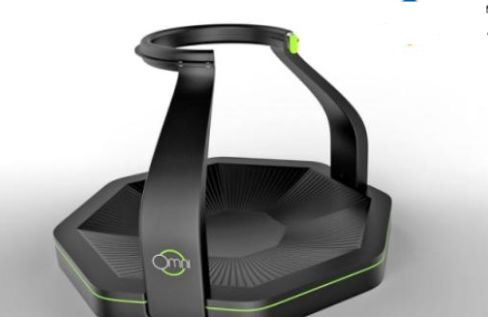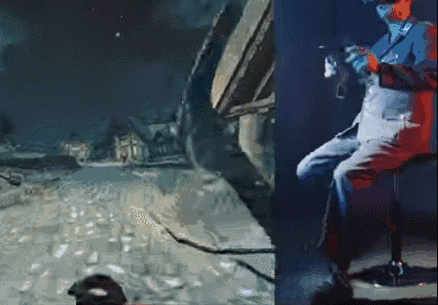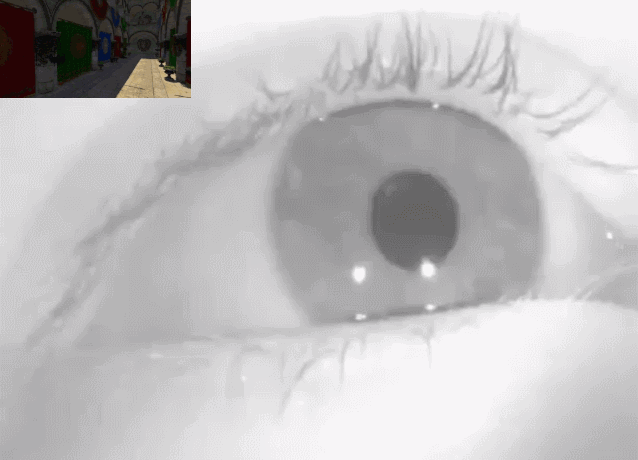Walking in virtual reality is still an unsolved problem. The indoor space of users is limited, but the virtual world is endless. How to achieve unlimited walking in a limited physical space? A treadmill design is probably feasible, for example This product called Virtuix Omni uses a concave cushion, which uses the principle of gravity. Even if a person is always in motion, it will still remain in the center of the treadmill. The inspiration for the design, maybe from the running wheel of a hamster? There are many similar VR treadmill designs, but just by looking at the size of the machine, it is definitely worthwhile, and it is difficult to promote it. Recently, under a similar idea, GmbH has launched a shoe called Cybershoes, which is combined with a high stool to simplify the treadmill. The user sits on a high stool and puts on Cybershoes to walk and run. The faster the user's feet swing, the faster the control character can run. The mobile effect is ideal and the cost is not high, but there is still a certain gap between the experience of using and real walking. Walking experience and affordable prices are not impossible. Redirected walking technology can help create an infinite virtual space in a limited room. Redirect walking No matter how good a person's sense of direction is, when walking with his eyes closed, he cannot walk in a straight line. In other words, even if you are spinning around the room with your eyes closed, you are likely to feel convinced that you are walking in a straight line. The human body "defect" that lacks a sense of direction when you close your eyes can be very conveniently used in VR, allowing people to believe that they are exploring a vast world in a practically small environment. However, in order to deceive humans’ sense of space, the prerequisite is to cover people’s eyes so that vision cannot adjust and correct their sense of direction. However, although the content seen in VR is not real, the human eye is still working. How to achieve redirected walking? In March this year, Nvidia and Adobe jointly released a breakthrough research result. Their research uses a feature of human vision: saccade inhibition. The so-called saccade suppression is when the eyeball shifts from one fixation point to the next, although the time is short, the human eye is in a transient state of blindness within these tens of milliseconds. The technology of Nvidia and Adobe is to use eye tracking to accurately track the scanning process of the eyeball, and use the visual inhibition period of the eyeball for this period of time to manipulate the VR screen. In just a blink of an eye, the visual image has undergone subtle changes, but the human eye is unaware of this. The scene rotates slightly to induce the user to "walk straight" in a certain direction, but in the real physical space, the user is making a turn and hitting the wall. Recently, a dissertation by a PhD from the University of Hamburg showed us the updated development situation of redirected walking technology. Similar to the Nvidia and Adobe technologies mentioned above, this article also uses visual inhibition to manipulate VR images during the short period of "blindness" in the human eye. The difference is that here he not only used the visual suppression during saccades, but also noticed the visual suppression during blinking. The article points out that saccades and blinks are common eye movements. Counting the duration of these movements, one-tenth of the time when people use their eyes is actually in such a visual inhibition process. In other words Compared with the technologies of NVIDIA and Adobe, the solution adopted in the article includes the blinking time, which prolongs the overall time of visual suppression, and the operation space for fine-tuning the screen is larger. Humans blink 10 to 20 times per minute, and the total duration is between 4-19 seconds. Different ages, genders, and fatigue levels will have different blink frequencies. With just a blink of an eye, the picture in the eye has been lost. The most frightening thing is that the user can't detect the camera angle rotation of 2 to 5 degrees and the user view translation of 4 to 9 cm. Every time the human eye blinks, the gaze point shifts, the picture is quietly changed. When the human eye sees the picture again, it will be induced to move in a curve, thereby saving indoor space. The article points out that using their current technology, the performance of the redirected walking effect can be improved by about 50%. Weekly Promotion Power Station Weekly Promotion Power Station,Mobile Power Station,Outdoor Charging Portable Power Station,Charging Portable Power Station Guangdong pisen electronics co., ltd , https://www.pisenpro.com









